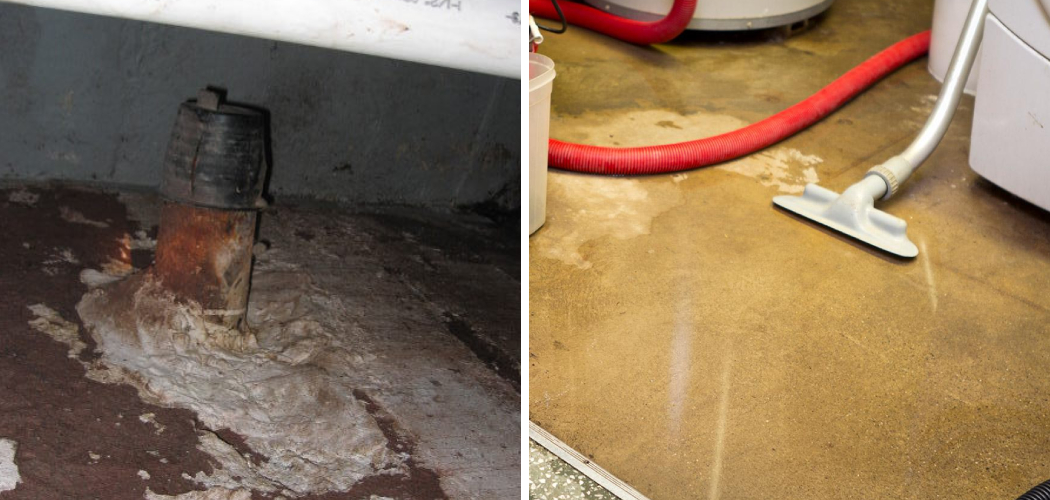Nobody ever plans on having a sewage backup in their basement, but unfortunately, it can happen. When you do find yourself dealing with this kind of emergency, it’s important that you clean up the mess properly and quickly to avoid any health risks or damage.
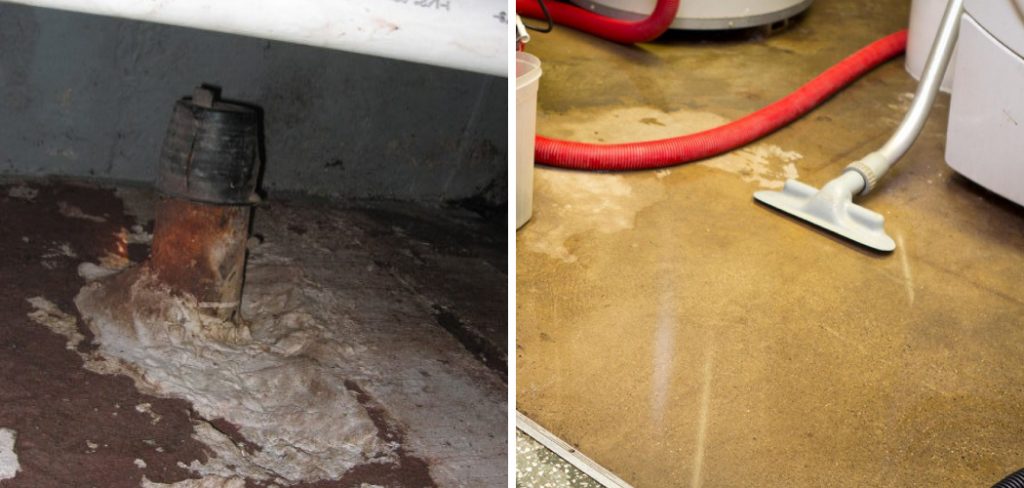
However, this isn’t always an easy job and requires some special tools and knowledge about the proper cleaning steps for basements after a sewage backup. If you’re looking for help getting your basement back to normal from a sewage problem, reading through our guide on cleaning your basement after a sewage backup is essential!
We’ll walk you through all the details of what needs to be done and provide tips for using household items safely to remove odors and sanitize surfaces. So keep reading if you want to know how to clean basement after sewage backup!
What Will You Need?
You will need a few key items to get started cleaning your basement after a sewage backup. These include:
- Safety gear, including gloves, eye protection, and a face mask
- Heavy-duty cleaning supplies such as disinfectant sprays or wipes and a brush or sponge for scrubbing
- Plastic sheeting or tarps to cover any furniture or floors in the area that may be contaminated by sewage
- A dehumidifier to help dry out the space and remove foul odors
- Sanitizing agents such as chlorine bleach, vinegar, or hydrogen peroxide to kill off any remaining bacteria or germs in the space
- Deodorizers such as baking soda or essential oils to get rid of lingering smells from sewage damage
- A wet vac for quickly extracting standing water from deep within cracks and crevices
Once you have all of these items ready, it’s time to start the cleaning process. Here are a few key steps to follow when cleaning your basement after a sewage backup.
10 Easy Steps on How to Clean Basement After Sewage Backup
Step 1. Take a Clean Surface:
Before you start cleaning, it’s important to have a clean surface on which to work. So begin by putting down some plastic sheeting or tarps to cover up any furniture or other items that may contaminate the sewage. Be careful to avoid spreading any odors or bacteria from the spill to other parts of your basement.
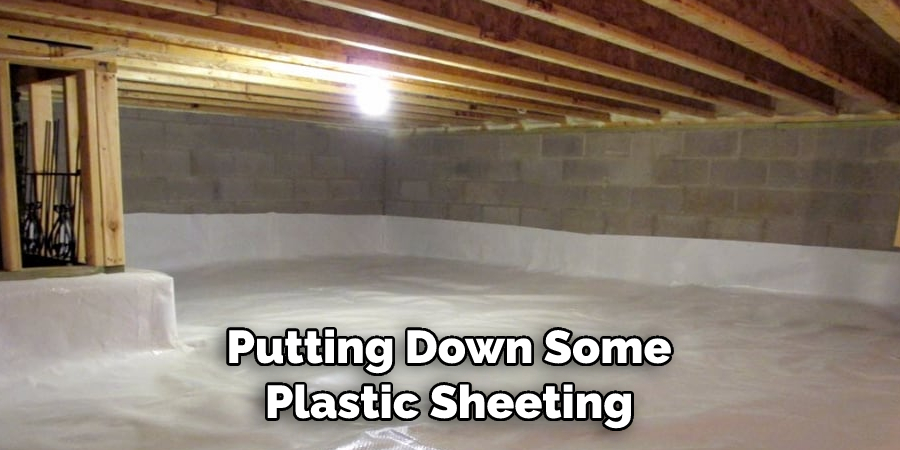
Step 2. Clean and Disinfect Surfaces:
Next, use your heavy-duty cleaning supplies to scrub down any surfaces that may have come into contact with sewage. This should include removing debris or grime and disinfecting all surfaces to kill any bacteria or germs that may still be lingering. If you doubt how clean a surface is, it’s better to be safe than sorry and just assume it needs disinfecting.
Step 3. Ventilate and Dehumidify the Area:
Once you have cleaned all the surfaces in your basement, it is important to air out the area and get rid of any remaining moisture. This can be done by using a dehumidifier to draw out any dampness or simply opening up windows and doors to let in the fresh air. Once all moisture has been removed, the lingering odors should also be easier to eliminate.
Step 4. Apply Deodorizers:
To remove any lingering sewage smells, applying some deodorizing agents such as baking soda, vinegar, or essential oils is a good idea. These can be sprinkled throughout the space to absorb smells and freshen up the area naturally. You can also try using activated charcoal or kitty litter to help absorb strong odors.
Step 5. Use a Wet Vac for Large Spills:
If your basement is severely flooded or there are large puddles of water that need to be cleaned, it’s best to use a wet vac to remove the excess water quickly. This can be done by sucking up the larger puddles or anything that may still be wet and then applying additional cleaning agents to help get rid of any remaining debris or smells. Ensure that you wear your safety gear and work carefully to avoid any accidents.
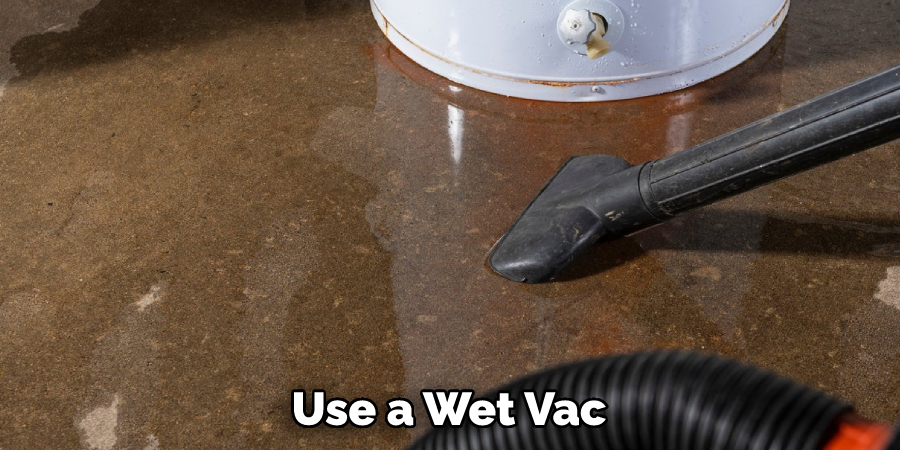
Step 6. Sanitize Again, if Necessary:
If any surfaces or items in your basement were still damp after you used the wet vac, it’s a good idea to go back and repeat the disinfecting process. This can include simply scrubbing down the area with a clean brush to remove any remaining germs or bacteria that could be lurking. Be careful not to spread the bacteria or make any cross-contamination, and always wear your protective gear.
Step 7. Let Everything Air Dry:
Once you have finished cleaning, it’s a good idea to let the items in your basement air dry for at least 24 hours. This will give everything enough time to dry out and ensure all the bacteria or germs are gone. Additionally, it will help deodorize any lingering smells by allowing the deodorizing agents to really sink in.
Step 8. Monitor for Further Contamination:
Once you have thoroughly cleaned your basement and removed any lingering odors, monitoring the space for further contamination or moisture is important. This means keeping a close eye on how much water has entered the space and how often it may happen again in the future. It is also important to check for mold growth if it is not visible at first glance and to seek out any additional help from professionals.
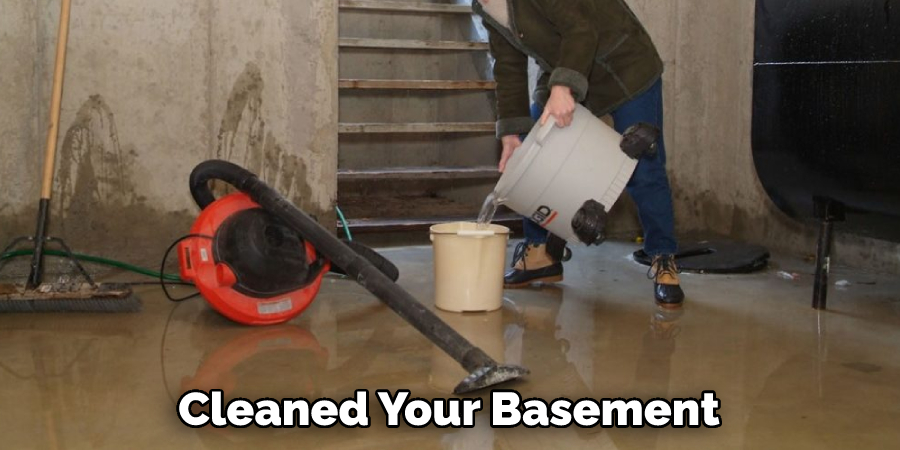
Step 9. Maintain the Clean Basement:
In order to maintain a clean and sanitary basement after a sewage backup, it is important to regularly inspect your space for any signs of water damage or contamination. This can be done by checking for mold growth, monitoring how much moisture may be entering the space, and ensuring that any deodorizers or disinfecting agents are still working effectively.
Additionally, it is a good idea to clean up spills quickly if they happen in order to prevent further contamination. Regular maintenance and care can keep your basement clean and healthy after a sewage backup incident.
Step 10. Contact a Professional for Further Assistance:
If you cannot get your basement fully clean and sanitized after a sewage backup, or if further contamination continues, it is important to seek professional assistance. This can include working with a mold remediation specialist or sewage cleanup expert who can help you remove any lingering contamination and get your space back up and running again.
With the right help, you can keep your basement clean, dry, and safe after a sewage backup incident. By following these simple steps, you can easily clean and sanitize your basement after a sewage backup. Whether you are using natural or chemical-based cleaning agents, these tips will help you get the job done quickly and effectively to enjoy a safe, dry space once again.
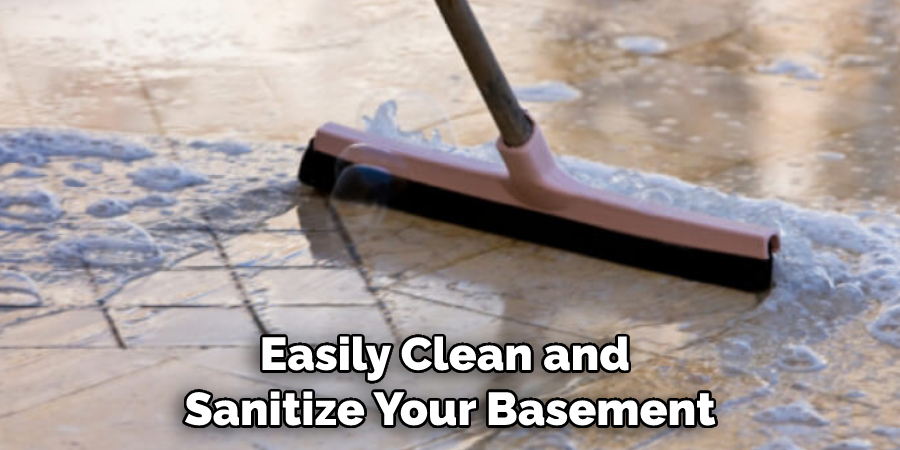
5 Additional Tips and Tricks
- Start by putting down some plastic sheeting or tarps to protect any furniture or other items that the spilled sewage may have contaminated.
- Use a wet vacuum or other cleaning tools to quickly and effectively remove any large pools of water, puddles, or debris.
- Apply disinfecting agents such as bleach, vinegar, or essential oils in order to thoroughly clean and sanitize the space.
- Be sure to wear your safety gear at all times and work carefully in order to avoid accidents or injuries.
- Avoid spreading any remaining bacteria or germs by carefully cleaning the area, and allow everything plenty of time to air dry.
With these tips and tricks, you can clean your basement after a sewage backup quickly and effectively.
5 Safety Precautions
- Always wear protective gear, such as gloves and safety goggles, when cleaning up after a sewage backup to avoid contamination or injury.
- Use caution when working with heavy equipment or other tools in order to prevent accidents or injuries from occurring.
- Stay vigilant about monitoring your space for any moisture, water damage, debris, or mold growth that may indicate further contamination or problems.
- Never enter the space if it still smells strongly of sewage, as this may indicate that bacteria or other hazardous materials are still present and could pose a health risk.
- Invest in professional mold remediation or sewage cleanup services if you cannot clean and sanitize the space on your own.
With these safety precautions in mind, you can clean and sanitize your basement effectively following a sewage backup incident. By taking the time to assess and prepare your space properly, you can ensure a safe, dry, and healthy environment for you and your family.
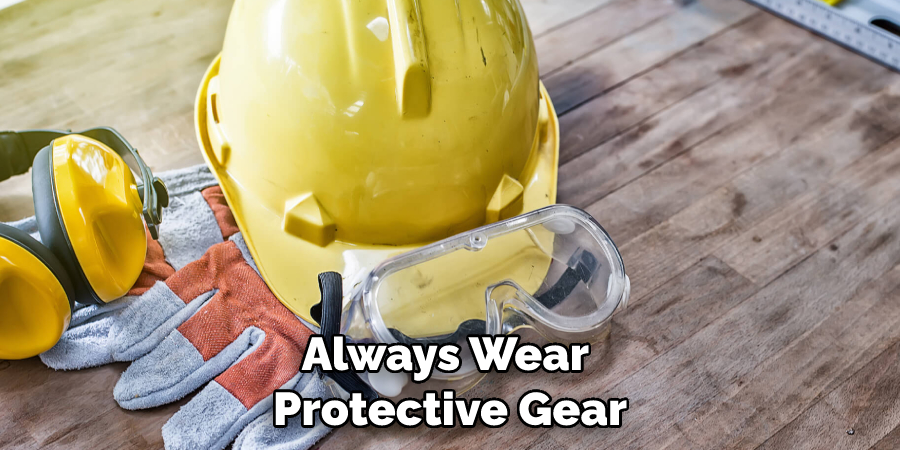
Can Sewage Back Up Make You Sick?
Sewage backups can occur for a variety of reasons, such as clogs or broken pipes in your home’s plumbing system. In some cases, these backups may contain dangerous bacteria or other harmful contaminants that can make you sick if they are not properly cleaned up and disinfected.
If you have experienced a sewage backup in your home, it is important to take the necessary precautions to protect yourself and others from potential contamination. This may include wearing protective gear like gloves and goggles when working with cleaning tools or materials, carefully monitoring how much moisture is entering the space, and taking preventive measures like immediately cleaning up any spills or puddles.
To further minimize your risk of exposure to sickness-causing pathogens after a sewage backup, you may also want to consider working with a professional mold or sewage cleanup specialist. These experts can help you clean and sanitize your space thoroughly, ensuring that all harmful bacteria and contaminants are safely removed from the area. With proper cleaning techniques and precautions, you can safely recover from a sewage backup incident in your home.
Does Vinegar Disinfect Sewage?
There is some debate about whether or not vinegar is an effective disinfectant for sewage. On the one hand, some studies have shown that vinegar has mild antibacterial properties that may help reduce harmful pathogens in contaminated areas.
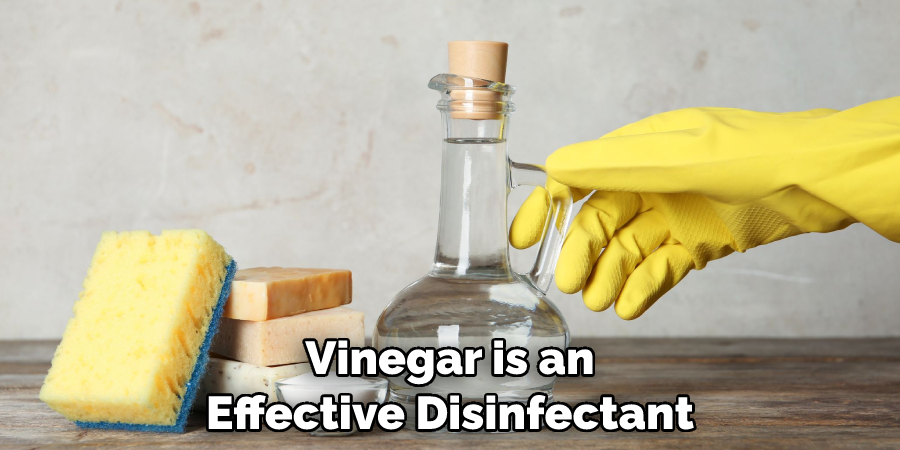
On the other hand, there are also concerns about how well vinegar can penetrate deep into porous surfaces like concrete and wood, which may make it less effective at disinfecting larger spaces. Additionally, there may be certain types of bacteria or contaminants that are resistant to the effects of vinegar and other natural cleaning agents.
With the right tools and techniques, you can safely restore your home after a sewage backup, no matter how severe the contamination may be.
Can Carpet Be Cleaned After Sewer Backup?
There is no definitive answer to this question, as the extent of damage and how well the carpet can be cleaned will depend on a variety of factors.
For example, if your carpet has been soaked in sewage for an extended period of time, it may be more difficult or even impossible to restore its original condition. Additionally, certain types of carpet materials may also be more or less susceptible to damage from exposure to sewer water.
That being said, there are several different cleaning methods and techniques that you can try to remove any stains or odors from your carpet after a sewage backup. These may include using a combination of baking soda and vinegar to neutralize smells and stains, hiring professional cleaners who specialize in restoration work or simply replacing the carpet altogether.
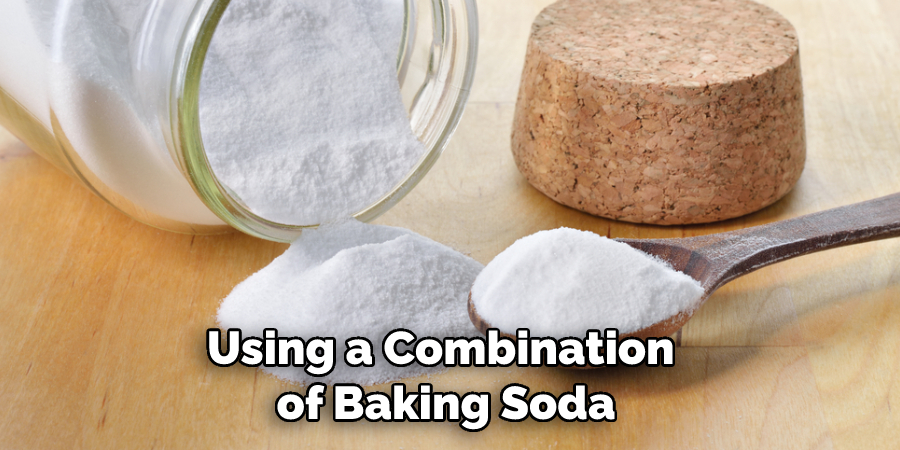
By doing your research, consulting with professionals, and taking the right precautions and measures, though, you can restore your home to its original condition after a sewage backup incident.
Conclusion
Basement sewer backups are one of the most dangerous and stressful things that can happen in your home. But with a little know-how, you can clean it up yourself without needing professional help. By following these steps, you’ll have your basement back to its original state in no time.
Hopefully, the article on how to clean basement after sewage backup has been helpful and informative. Whether you’re dealing with a minor spill or a more serious sewer backup incident, these tips can help guide you through the process of restoring your home to safety and comfort. So take a deep breath, stay calm, and get to work!

